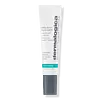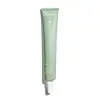What's inside
What's inside
 Key Ingredients
Key Ingredients

 Benefits
Benefits

 Concerns
Concerns

 Ingredients Side-by-side
Ingredients Side-by-side

Sulfur 5%
AntiseborrhoeicWater
Skin ConditioningNiacinamide
SmoothingPropanediol
SolventGlycerin
HumectantAcacia Senegal Gum
MaskingPolyacrylate Crosspolymer-6
Emulsion StabilisingHydroxyacetophenone
AntioxidantLactic Acid
BufferingPelargonium Graveolens Flower Oil
MaskingLavandula Hybrida Oil
EmollientLavandula Angustifolia Oil
MaskingCitrus Limon Peel Oil
MaskingSalvia Sclarea Oil
MaskingAloe Barbadensis Leaf Extract
EmollientCitrus Aurantium Dulcis Peel Oil
MaskingPunica Granatum Pericarp Extract
Skin ConditioningRosmarinus Officinalis Leaf Oil
MaskingMyristyl Myristate
EmollientBeta-Glucan
Skin ConditioningBiosaccharide Gum-1
HumectantGlyceryl Stearate
EmollientMaltodextrin
AbsorbentCaprylyl Glycol
EmollientPolylysine
Cetearyl Alcohol
Emollient1,2-Hexanediol
Skin ConditioningSodium Acrylates Crosspolymer-2
AbsorbentCeteareth-12
EmulsifyingTitanium Dioxide
Cosmetic ColorantTetrasodium Glutamate Diacetate
Potassium Cetyl Phosphate
EmulsifyingSodium Hydroxide
BufferingDimethyl Isosorbide
SolventThymol
AntimicrobialTerpineol
MaskingAlgin
MaskingCamphor
MaskingO-Cymen-5-Ol
AntimicrobialSodium Benzoate
MaskingLimonene
PerfumingLinalool
PerfumingCitronellol
PerfumingGeraniol
PerfumingSulfur 5%, Water, Niacinamide, Propanediol, Glycerin, Acacia Senegal Gum, Polyacrylate Crosspolymer-6, Hydroxyacetophenone, Lactic Acid, Pelargonium Graveolens Flower Oil, Lavandula Hybrida Oil, Lavandula Angustifolia Oil, Citrus Limon Peel Oil, Salvia Sclarea Oil, Aloe Barbadensis Leaf Extract, Citrus Aurantium Dulcis Peel Oil, Punica Granatum Pericarp Extract, Rosmarinus Officinalis Leaf Oil, Myristyl Myristate, Beta-Glucan, Biosaccharide Gum-1, Glyceryl Stearate, Maltodextrin, Caprylyl Glycol, Polylysine, Cetearyl Alcohol, 1,2-Hexanediol, Sodium Acrylates Crosspolymer-2, Ceteareth-12, Titanium Dioxide, Tetrasodium Glutamate Diacetate, Potassium Cetyl Phosphate, Sodium Hydroxide, Dimethyl Isosorbide, Thymol, Terpineol, Algin, Camphor, O-Cymen-5-Ol, Sodium Benzoate, Limonene, Linalool, Citronellol, Geraniol
Water
Skin ConditioningGlycerin
HumectantAlcohol Denat.
AntimicrobialMicrocrystalline Cellulose
AbsorbentCoco-Caprylate/Caprate
EmollientGlyceryl Stearate Se
EmulsifyingBentonite
AbsorbentNiacinamide
SmoothingGlyceryl Stearate Citrate
EmollientPalmitoyl Grape Seed Extract
Skin ConditioningAcacia Senegal Gum
MaskingArginine
MaskingSalicylic Acid
MaskingXanthan Gum
EmulsifyingGlyceryl Stearate
EmollientPelargonium Graveolens Flower Oil
MaskingMentha Piperita Oil
MaskingCitral
PerfumingCymbopogon Citratus Leaf Oil
MaskingMelaleuca Alternifolia Leaf Oil
AntioxidantRosmarinus Officinalis Leaf Oil
MaskingCitronellol
PerfumingCI 77492
Cosmetic ColorantGeraniol
PerfumingLinalool
PerfumingLavandula Hybrida Oil
EmollientMaltodextrin
AbsorbentMelissa Officinalis Leaf Oil
MaskingHydrolyzed Gardenia Florida Extract
AntioxidantSodium Citrate
BufferingLimonene
PerfumingWater, Glycerin, Alcohol Denat., Microcrystalline Cellulose, Coco-Caprylate/Caprate, Glyceryl Stearate Se, Bentonite, Niacinamide, Glyceryl Stearate Citrate, Palmitoyl Grape Seed Extract, Acacia Senegal Gum, Arginine, Salicylic Acid, Xanthan Gum, Glyceryl Stearate, Pelargonium Graveolens Flower Oil, Mentha Piperita Oil, Citral, Cymbopogon Citratus Leaf Oil, Melaleuca Alternifolia Leaf Oil, Rosmarinus Officinalis Leaf Oil, Citronellol, CI 77492, Geraniol, Linalool, Lavandula Hybrida Oil, Maltodextrin, Melissa Officinalis Leaf Oil, Hydrolyzed Gardenia Florida Extract, Sodium Citrate, Limonene
 Reviews
Reviews

Ingredients Explained
These ingredients are found in both products.
Ingredients higher up in an ingredient list are typically present in a larger amount.
Acacia Senegal Gum has skin soothing, thickening, and formulation stabilizing properties. It comes from the Acacia tree that is native to sub-Saharan Africa.
Citronellol is used to add fragrance/parfum to a product. It is often derived from plants such as roses. In fact, it can be found in many essential oils including geranium, lavender, neroli, and more. The scent of Citronellol is often described as "fresh, grassy, and citrus-like".
Since the Citronellol molecule is already unstable, Citronellol becomes irritating on the skin when exposed to air.
Citronellol is a modified terpene. Terpenes are unsaturated hydrocarbons found in plants. They make up the primary part of essential oils.
Citronellol is not able to be absorbed into deeper layers of the skin. It has low permeability,
Citronellol is also a natural insect repellent.
Learn more about CitronellolGeraniol is used to add fragrance/parfum to a product. It is the main component of citronellol. It is a monoterpenoid and an alcohol.
Monoterpenes are naturally found in many parts of different plants.
Geraniol can be found in many essential oils including Rose Oil and Citronella Oil. The scent of Geraniol is often described as "rose-like". Many foods also contain Geraniol for fruit flavoring.
Geraniol can irritate the skin when exposed to air. However, irritation depends on the ability of geraniol to penetrate into the skin. In general, geraniol is not able to penetrate skin easily.
Geraniol is colorless and has low water-solubility. However, it is soluble in common organic solvents.
Like citronellol, it is a natural insect repellent.
2,6-Octadien-1-ol, 3,7-dimethyl-, (2E)-
Learn more about GeraniolGlycerin is already naturally found in your skin. It helps moisturize and protect your skin.
A study from 2016 found glycerin to be more effective as a humectant than AHAs and hyaluronic acid.
As a humectant, it helps the skin stay hydrated by pulling moisture to your skin. The low molecular weight of glycerin allows it to pull moisture into the deeper layers of your skin.
Hydrated skin improves your skin barrier; Your skin barrier helps protect against irritants and bacteria.
Glycerin has also been found to have antimicrobial and antiviral properties. Due to these properties, glycerin is often used in wound and burn treatments.
In cosmetics, glycerin is usually derived from plants such as soybean or palm. However, it can also be sourced from animals, such as tallow or animal fat.
This ingredient is organic, colorless, odorless, and non-toxic.
Glycerin is the name for this ingredient in American English. British English uses Glycerol/Glycerine.
Learn more about GlycerinGlyceryl Stearate is a mix of glycerin and stearic acid.
It is used to stabilize the mixing of water and oil ingredients. By preventing these ingredients from separating, it can help elongate shelf life. It can also help thicken the product's texture.
As an emollient, it helps soften skin and supports barrier-replenishing ingredients.
In cosmetics, Glyceryl Stearate is often made from vegetable oils or synthetically produced.
This ingredient may not be fungal-acne safe
Fun fact: The human body also creates Glyceryl Stearate naturally.
Learn more about Glyceryl StearateLavandula Hybrida Oil is an oil.
Limonene is a fragrance that adds scent and taste to a formulation.
It's found in the peel oil of citrus fruits and other plants such as lavender and eucalyptus. The scent of limonene is generally described as "sweet citrus".
Limonene acts as an antioxidant, meaning it helps neutralize free radicals.
When exposed to air, oxidized limonene may sensitize the skin. Because of this, limonene is often avoided by people with sensitive skin.
The term 'fragrance' is not regulated in many countries. In many cases, it is up to the brand to define this term. For instance, many brands choose to label themselves as "fragrance-free" because they are not using synthetic fragrances. However, their products may still contain ingredients such as essential oils that are considered a fragrance.
Learn more about LimoneneLinalool is a fragrance and helps add scent to products. It's derived from common plants such as cinnamon, mint, citrus, and lavender.
Like Limonene, this ingredient oxidizes when exposed to air. Oxidized linalool can cause allergies and skin sensitivity.
This ingredient has a scent that is floral, spicy tropical, and citrus-like.
Learn more about LinaloolMaltodextrin is a polysaccharide. It is derived from starch such as rice, corn, wheat, or potato starch.
In food, Maltodextrin is used to improve the texture and thicken a product. Due to its structure, it can help create a gel texture. As an emulsion stabilizer, it helps keep the ingredients in a product together.
As a polysaccharide, Maltodextrin has moisturizing properties. Polysaccharides are a type of carbohydrate. The top layer of skin uses polysaccharides to retain water, keeping the skin hydrated.
Maltodextrin is water soluble and has a sweet taste.
Learn more about MaltodextrinNiacinamide is a multitasking form of vitamin B3 that strengthens the skin barrier, reduces pores and dark spots, regulates oil, and improves signs of aging.
And the best part? It's gentle and well-tolerated by most skin types, including sensitive and reactive skin.
You might have heard of "niacin flush", or the reddening of skin that causes itchiness. Niacinamide has not been found to cause this.
In very rare cases, some individuals may not be able to tolerate niacinamide at all or experience an allergic reaction to it.
If you are experiencing flaking, irritation, and dryness with this ingredient, be sure to double check all your products as this ingredient can be found in all categories of skincare.
When incorporating niacinamide into your routine, look out for concentration amounts. Typically, 5% niacinamide provides benefits such as fading dark spots. However, if you have sensitive skin, it is better to begin with a smaller concentration.
When you apply niacinamide to your skin, your body converts it into nicotinamide adenine dinucleotide (NAD). NAD is an essential coenzyme that is already found in your cells as "fuel" and powers countless biological processes.
In your skin, NAD helps repair cell damage, produce new healthy cells, support collagen production, strengthen the skin barrier, and fight environmental stressors (like UV and pollution).
Our natural NAD levels start to decline with age, leading to slower skin repair, visible aging, and a weaker skin barrier. By providing your skin niacinamide, you're recharging your skin's NAD levels. This leads to stronger, healthier, and younger looking skin.
Another name for vitamin B3 is nicotinamide. This vitamin is water-soluble and our bodies don't store it. We obtain Vitamin B3 from either food or skincare. Meat, fish, wheat, yeast, and leafy greens contain vitamin B3.
The type of niacinamide used in skincare is synthetically created.
Learn more about NiacinamidePelargonium Graveolens Flower Oil is the pressed oil of the Rose Geranium plant. It is volatile, meaning it evaporates off the skin.
Fragrant components of Rose Geranium include citronellol and geraniol. These may cause allergies and skin-sensitivity. We recommend speaking with a professional if you have any concerns.
The scent of Rose Geranium closely resembles traditional roses.
Learn more about Pelargonium Graveolens Flower OilRosmarinus Officinalis Leaf Oil is oil expressed from the leaves of the rosemary plant.
Rosemary Leaf Oil is a fragrance and helps give your product a scent. If you are sensitive to irritating fragrances, this one contains camphor. Camphor has been found to irritate skin.
This oil also contains antioxidant and antimicrobial properties. As an antioxidant, it may protect you skin against damage. This can help slow down the signs of aging.
Learn more about Rosmarinus Officinalis Leaf OilWater. It's the most common cosmetic ingredient of all. You'll usually see it at the top of ingredient lists, meaning that it makes up the largest part of the product.
So why is it so popular? Water most often acts as a solvent - this means that it helps dissolve other ingredients into the formulation.
You'll also recognize water as that liquid we all need to stay alive. If you see this, drink a glass of water. Stay hydrated!
Learn more about Water